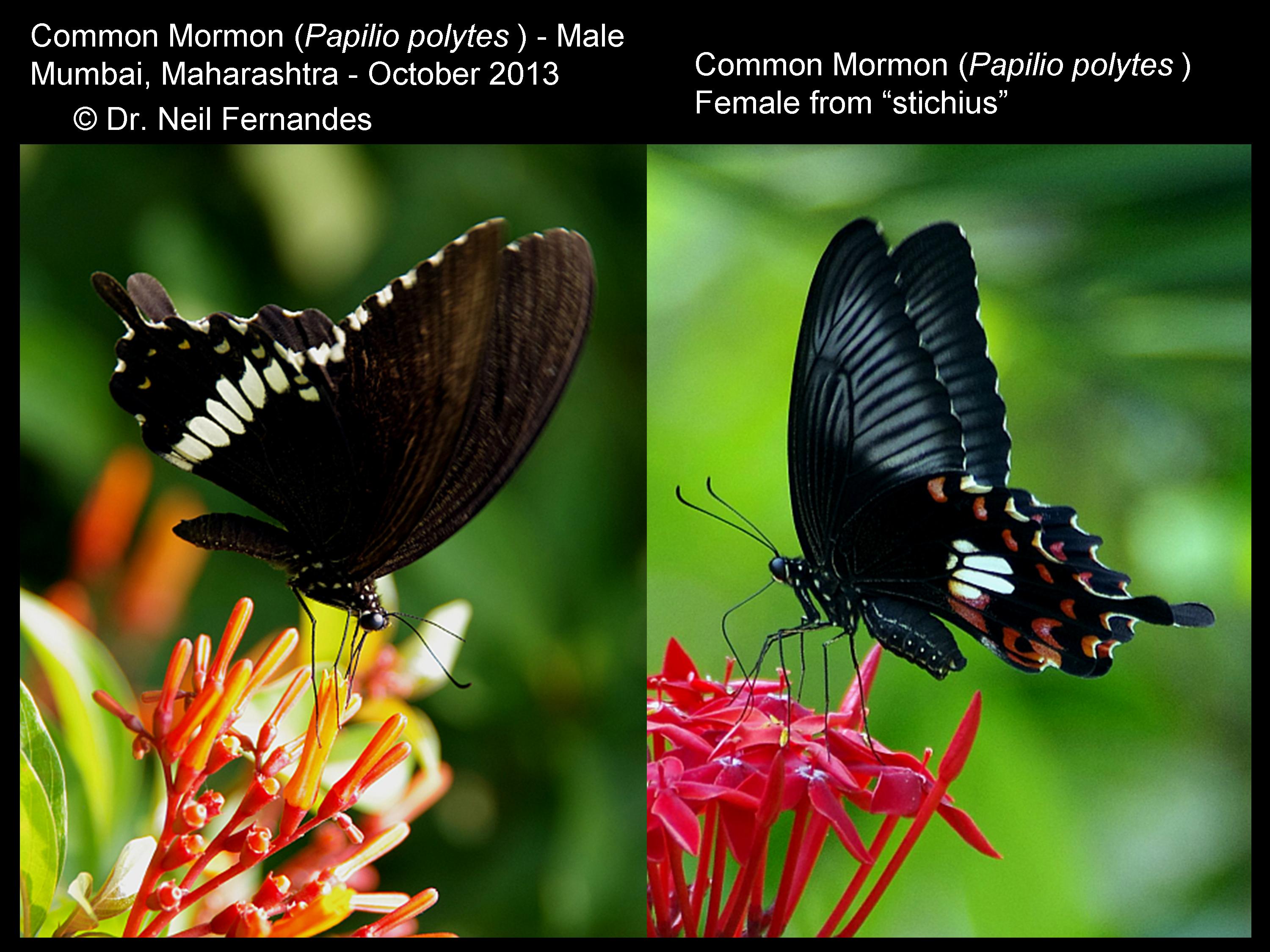The Common Mormon: An ingenious mimic
By Dr. Neil Dan Fernandes

The name of the Common Mormon (Papilio polytes) butterfly refers to a former practice of the Mormon religious sect, where having more than one wife (polygamy), was permitted. While male Common Mormons are always non-mimetic, females may appear to be significantly different and closely mimic the colors and patterns of two unrelated locally abundant and toxic red- bodied Swallowtail butterflies. The Common Mormon female form "stichius" mimics the inedible Common Rose (Pachliopta aristolochiae); while the Common Mormon female from "romulus" mimics the inedible Crimson Rose (Pachliopta hector).
The distasteful Crimson Rose and Common Rose butterflies are both well protected by poisons accumulated from their toxic larval host plant, creepers belonging to the genus Aristolochia. Once captured, these butterflies usually emit a nasty smelling substance, further advertising their unappealing qualities. Predators learn to associate the colour patterns of the toxic “model” butterfly species with un-palatability and in turn avoid the similar looking “mimic”. This form of mimicry where an inedible "model" species is mimicked by and edible “mimic” species is known as Batesian mimicry.
Females carry precious eggs and this special vulnerability to predation makes females more dependent on mimicry for their survival compared to the males. By mimicking toxic butterflies, females are thought to gain a survival advantage.

